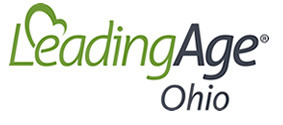Complete Story
01/14/2022
SCOTUS: Vaccine mandates allowed for health care providers, but blocked for large employers
SCOTUS: Vaccine mandates allowed
for health care providers,
but blocked for large employers
The US Supreme Court issued decisions yesterday on the legal challenges to the OSHA Vaccination and Testing Emergency Temporary Standard (ETS) and the CMS Interim Final Rule (IFR). After the decisions were issued, the Centers for Medicare & Medicaid Services (CMS) posted a press release stating that timelines that apply to providers in the states that were required to move ahead with implementing the IFR on December 28 are not changed. CMS is planning to post a memo today updating its recent guidance and describing plans to move forward with efforts to enforce the IFR nationwide as these cases work their way through the lower courts. The language in the press release implies that there will probably be new timelines that apply to the states like Ohio, that were previously not implementing the interim final rule (IFR) due to the injunction.
CMS IFR May Proceed Nationwide
In a 5-4 decision (Roberts, Kavanaugh, Breyer, Sotomayor, and Kagan) the court stayed the injunctions in place in the Louisiana and Missouri cases that challenged the CMS IFR. Thus, CMS can move forward and enforce the IFR nationwide while the legal challenges make their way through the Fifth (Louisiana case) and Eighth (Missouri case) Circuit Court of Appeals, respectively.
The majority found that the CMS IFR fit within the authority granted to the Secretary of HHS by Congress:
Congress has authorized the Secretary to impose conditions on the receipt of Medicaid and Medicare funds that “the Secretary finds necessary in the interest of the health and safety of individuals who are furnished services.” 42 U. S. C. §1395x(e)(9). COVID–19 is a highly contagious, dangerous, and—especially for Medicare and Medicaid patients—deadly disease. The Secretary of Health and Human Services determined that a COVID–19 vaccine mandate will substantially reduce the likelihood that healthcare workers will contract the virus and transmit it to their patients. 86 Fed. Reg. 61557–61558. He accordingly concluded that a vaccine mandate is “necessary to promote and protect patient health and safety” in the face of the ongoing pandemic. Id., at 61613.
The rule thus fits neatly within the language of the statute. After all, ensuring that providers take steps to avoid transmitting a dangerous virus to their patients is consistent with the fundamental principle of the medical profession: first, do no harm. It would be the “very opposite of efficient and effective administration for a facility that is supposed to make people well to make them sick with COVID–19.” Florida v. Department of Health and Human Servs., 19 F. 4th 1271, 1288 (CA11 2021).
OSHA ETS Blocked
In a 6-3 decision, the court granted a stay of the OSHA ETS and prohibited OSHA from enforcing the ETS pending further legal proceedings in the Sixth Circuit Court of Appeals.
The Court found that OSHA overstepped its authority in issuing such a broad ETS:
Applicants are likely to succeed on the merits of their claim that the Secretary lacked authority to impose the mandate. Administrative agencies are creatures of statute. They accordingly possess only the authority that Congress has provided. The Secretary has ordered 84 million Americans to either obtain a COVID–19 vaccine or undergo weekly medical testing at their own expense. This is no “everyday exercise of federal power.” In re MCP No. 165, 20 F. 4th, at 272 (Sutton, C. J., dissenting). It is instead a significant encroachment into the lives—and health—of a vast number of employees. “We expect Congress to speak clearly when authorizing an agency to exercise powers of vast economic and political significance.”….
There can be little doubt that OSHA’s mandate qualifies as an exercise of such authority.
The question, then, is whether the Act plainly authorizes the Secretary’s mandate. It does not. The Act empowers the Secretary to set workplace safety standards, not broad public health measures. Confirming the point, the Act’s provisions typically speak to hazards that employees face at work. See, e.g., §§651, 653, 657. And no provision of the Act addresses public health more generally, which falls outside of OSHA’s sphere of expertise.
The practical effect of this will be that OSHA will not be able to enforce the ETS while the legal proceedings make their way through the courts. Because the case will take time to make it through the judicial process and the OSHA ETS only lasts six months, it will likely not be enforced in its current form as it will expire before it makes it way back to the Supreme Court.
LeadingAge Ohio will continue to monitor the situation, and will share the anticipated CMS guidance once it is released. Note, QSO 22-07-All was released December 28, but it is yet unclear whether CMS will require states, including Ohio, to adhere to the timeline for states that were not under the injunction. LeadingAge's Member Webinar will not take place on Monday due to the holiday, however, LeadingAge Ohio will keep members updated as new information and details emerge.
